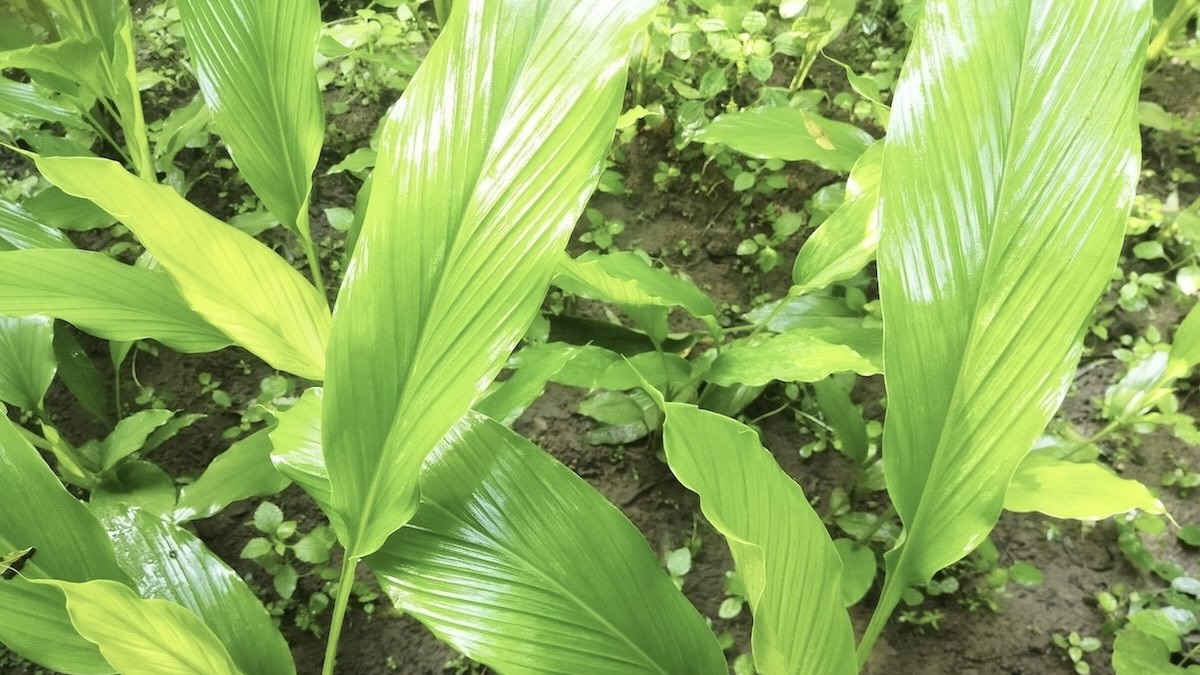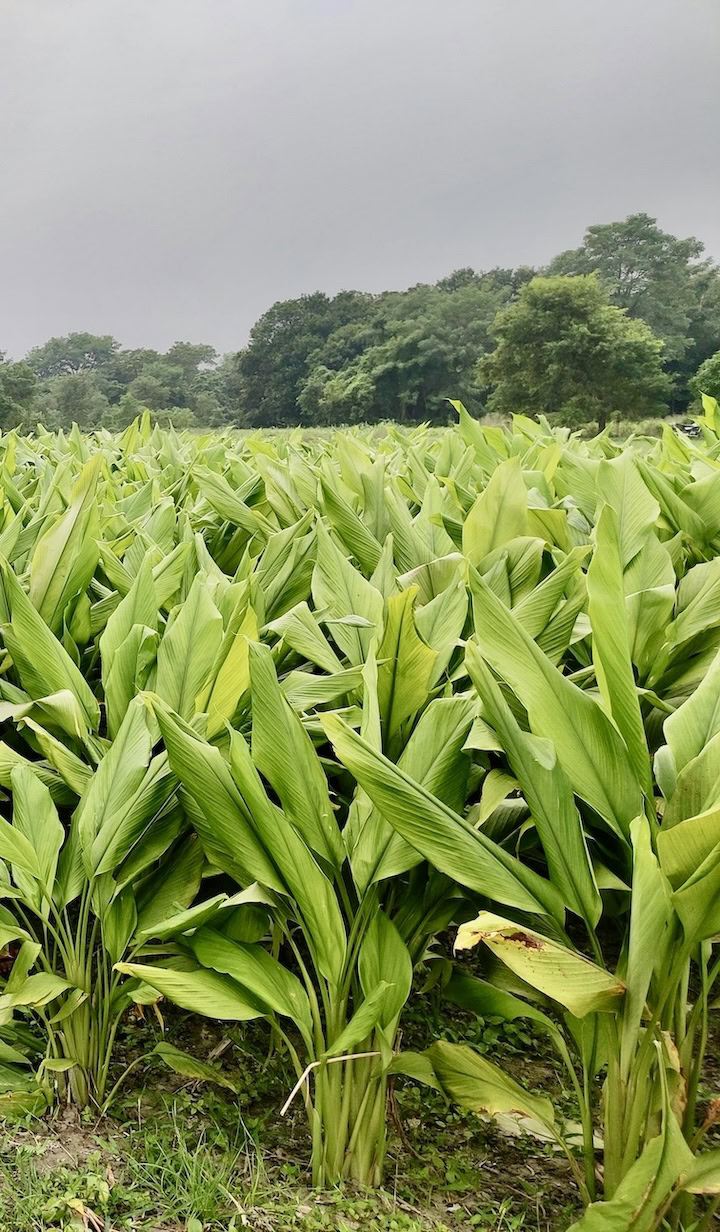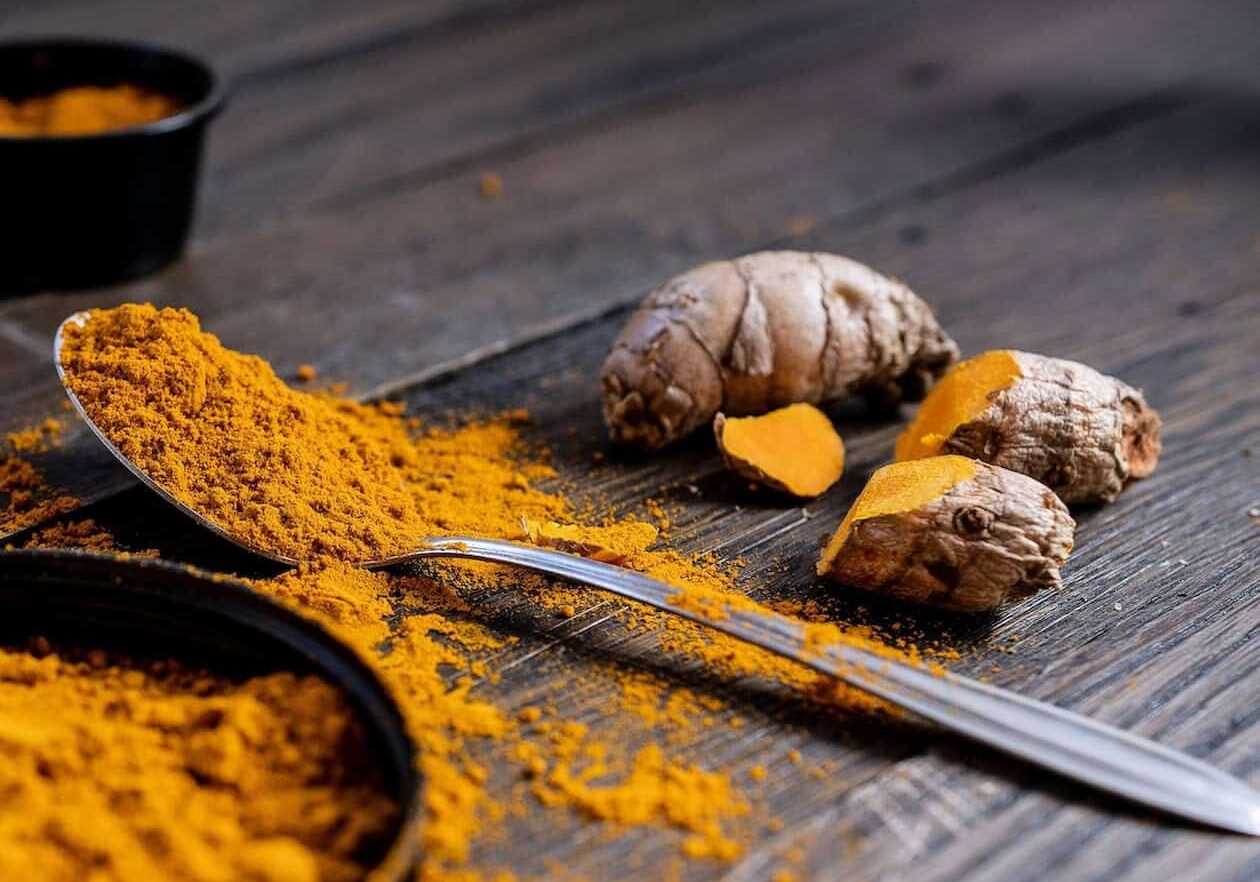How is Turmeric Produced?

LAST UPDATED: September 26, 2024
READ TIME: 4 minutes
Turmeric cultivation is deeply rooted in traditional practices that have been honed over millennia to ensure the yield of high-quality rhizomes. The meticulous process begins with the selection of the planting materials, which are often the rhizomes themselves. Yes, rhizomes are planted to produce more rhizomes. These “seed rhizomes” or “mother rhizomes" are preferred over seeds as they expedite the time to maturity. They are chosen based on their health and size. They must be plump and firm with smooth, yellow-orange skin, free from any signs of rot, damage, or disease. After they pass this visual and tactile inspection, they are weighed. A weight of 20-30 grams indicates a rhizome's ability to store sufficient energy and nutrients, leading to more vigorous, higher-yielding plants. They must also have at least two or three buds so there is enough opportunity to produce multiple shoots. While potential mothers are screened against this criteria, the soil is carefully prepared.
A Labor of Love
Before planting, the soil is tilled or plowed to loosen the soil and remove weeds. Compost or manure is then added to increase drainage and soil fertility. Mother rhizomes are planted, buds facing upwards, about 2-3 inches (5-7 cm) deep and 12-18 inches (30-45 cm) apart, This offers plenty of ventilation and sun penetration, which is essential for the plants to reach their full potential.
Curcuma longa is a tropical plant that thrives in warm, humid climates with ample rainfall, so farmers often plant at the start of the rainy season. Once in the ground, turmeric requires continual maintenance, from weeding and mulching to monitoring moisture levels. The plant requires constant moisture, particularly in the early stages of growth, but it is also sensitive to waterlogging, so farmers must carefully adjust drainage and irrigation throughout the growth cycle. Similarly, while turmeric likes being in the sun, it can get damaged from too much of it, so farmers in hotter climates must provide at least partial shading in the afternoon. A brilliant crop is thus the product of creating balance—for soil fertility, moisture, and sunlight. When this harmony is maintained over the course of the growing season, the finished spice really shines.
Turmeric's long growing period, typically 8-10 months, allows rhizomes to gradually develop their characteristic flavor and color. When the lower leaves turn yellow or the stems start to dry out, farmers know the rhizomes under the surface are nearing maturity. Curcuma longa is a perennial, so rhizomes are ready for harvest when the plant goes dormant in the winter, and the plant will return the following spring. However, since the primary rhizomes (the ones produced from a plant's first growing season) offer the highest yield and quality, commercial cultivators tend to harvest the entire plant after one growing season, replanting mother rhizomes each season. Small-scale or subsistence farmers will continue to harvest smaller rhizomes from the same plant in subsequent years.

From Soil to Spice Rack
Upon reaching maturity, the entire plant is carefully dug up and the rhizomes are washed to remove soil and any other debris. The thin, elongated offshoots of the mother rhizome (the “fingers”) are separated from the mother and sorted. Some regions believe a boiling process is critical as it cleanses the rhizomes, removes their raw aroma, and improves their color. Other regions skip the boiling process and move straight to sun-drying the rhizomes for several days until sufficiently cured.
Cured rhizomes are then polished, which is traditionally one of the more labor-intensive steps. They are either manually rubbed against stone or shaken in a gunny bag filled with small stones to remove the rough outer skin. Less traditional producers do this job with rotating polishing drums with abrasive inner linings. Rhizomes are also sometimes washed in a solution of ground turmeric and water to enhance their color and smooth out their appearance. Finished rhizomes are either sold fresh or ground into the famously vibrant powder we know so well. Turmeric is very tough and fibrous, so industrial grinders that incorporate cutting, crushing, and milling mechanisms are needed to produce a proper consistency of powder.

Ancient Traditions Adapting to the Future
In certain commercial farms, mechanization is being introduced into some parts of this process, and new technologies are helping to breed varieties with higher yields and disease resistance. However, the core principles of planting, harvesting, and curing remain rooted in practices handed down through generations. The production of turmeric is not just an agricultural endeavor. It is an art, deeply intertwined with local traditions, that has been refined over thousands of years in South Asia.
India, the world's largest producer and consumer, accounts for over 75% of the world's supply. Millions of farmers are involved, their economic livelihoods solely dependent on this one spice. It is a crop of extraordinary cultural and commercial value. As demand for turmeric continues to grow globally, both for its culinary and medicinal uses, sustainable cultivation is becoming increasingly important to ensure that its value can be enjoyed for many centuries to come.
Learn more about turmeric.

